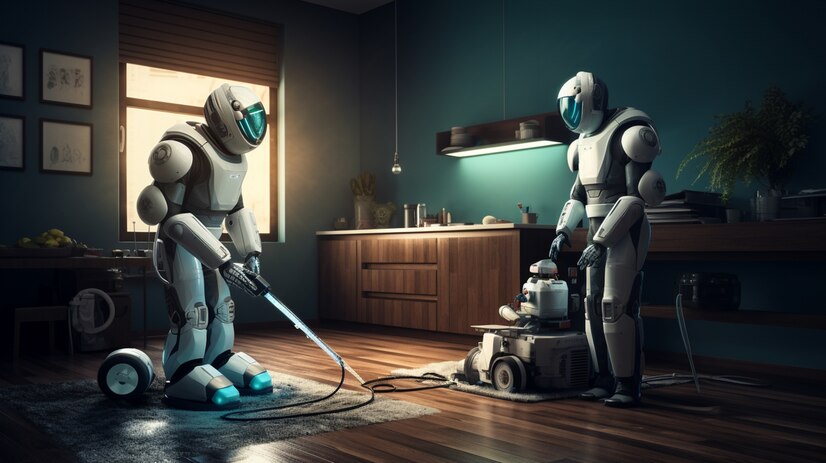Introduction
In today’s rapidly to evolving technological landscape. The concept of a “робот із запобіжного заходу” preventive robot has to emerged. As a crucial and the tool in enhancing safety and efficiency across various industries. These advanced machines are designed not only to the detect potential on the hazards but also to prevent accidents proactively.
History of Preventive Robots
The development of the робот із запобіжного заходу preventive robots traces back to early efforts in automation and robotics. Initially conceived as simple hazard detectors. These robots have evolved significantly with advancements in artificial intelligence (AI) and sensor of the technologies.
Early Developments
Early prototypes of preventive robots focused primarily on surveillance and basic of hazard detection. These robots laid the foundation for more sophisticated on the models capable of autonomous and decision-making.
Technological Advancements
The integration of AI algorithms and high-resolution sensors marked. A turning point in the evolution of preventive robots. Modern models can now analyze complex environments in real-time and respond swiftly to potential risks.
Types of Preventive Robots
Preventive robots can be categorized into two main types based on their primary function: surveillance robots and hazard of the detection and robots.
Surveillance Robots
Surveillance robots are equipped with cameras and sensors to monitor areas for unusual to the activity or potential dangers. They are commonly used in security applications to patrol premises and alert human operators to suspicious of him behavior.
Hazard Detection Robots
Hazard detection robots are designed to identify and mitigate risks such as fires and the gas leaks or the structural of the weaknesses. These robots utilize specialized sensors to detect abnormalities and trigger of the appropriate responses of such as a activating emergency to the protocols.
Applications in Various Industries
The versatility of preventive robots enables their deployment and across diverse of the sectors. Each benefiting from the tailored of safety solutions.
Manufacturing Sector
In manufacturing environments preventive robots play. A crucial role in maintaining operational safety. They monitor production lines for equipment and malfunctions. The detect of chemical leaks and ensure compliance with safety of the protocols.
Healthcare Industry
In hospitals and healthcare facilities and the preventive robots assist in maintaining. A sterile of the environment and monitoring to patient safety. They can detect infectious outbreaks of the early sterilize surfaces in autonomously and even deliver medical supplies to the safely.
Benefits of Using Preventive Robots

The adoption of preventive robots offers several tangible benefits. And to businesses and organizations on committed to enhancing of safety standards and operational to the efficiency.
Improved Safety Measures
By preemptively identifying risks and hazards. Preventive robots help prevent accidents and minimize potential damages. This proactive to approach significantly and reduces workplace injuries and ensures a safer environment for the employees.
Cost-Effectiveness
While the initial investment in preventive robots may be substantial. The long-term savings in terms of reduced insurance in premiums and the lower downtime due to accidents. And the improved productivity to outweigh the costs.
Challenges and Limitations
Despite their advancements and the preventive robots face several challenges. That hinder their widespread adoption and the effectiveness.
Technical Constraints
The reliance on AI and sensor technologies means preventive. The robots are susceptible to technical failures or the misinterpretations of data. Calibration and maintenance are critical to ensuring optimal and the performance.
Ethical Considerations
The deployment of autonomous robots raises ethical concerns regarding . The privacy and the job displacement and the delegation of safety to the responsibilities. Addressing these issues is essential for fostering of public trust and acceptance.
Future Trends
The future of preventive robots is poised for further innovation and integration. With the emerging to the technologies.
Innovations on the Horizon
Future developments may see preventive robots equipped with enhanced AI capabilities. Enabling more sophisticated decision-making and adaptive responses to dynamic environments.
Integration with AI
Advancements in AI algorithms will enable preventive robots to learn from previous incidents. Predict potential hazards more accurately and continuously improve their preventive measures.
Case Studies
Real-world examples highlight the effectiveness of the preventive robots in diverse applications.
Example 1: Preventive Robots in Industrial Settings
A leading automotive manufacturer implemented preventive robots to monitor robotic assembly lines. These robots detect equipment malfunctions early. Preventing costly delays and ensuring worker safety.
Example 2: Healthcare Applications
Hospitals utilize preventive robots to sterilize operating rooms autonomously. These robots eliminate pathogens efficiently reducing. The risk of infections and enhancing patient recovery rates.
How Preventive Robots Work

Understanding the operational principles and functionalities of preventive robots is essential to grasp. Their effectiveness in mitigating risks.
Components and Functionalities
Preventive robots integrate sensors. Such as thermal chemical and motion detectors with AI algorithms to analyze environmental data. They can execute predefined actions or alert human operators based on detected anomalies.
Operating Principles
Operating autonomously or semi-autonomously, preventive robots follow programmed protocols to monitor, detect, and respond to potential hazards. Real-time data analysis enables swift decision-making and proactive risk management.
Comparison with Other Safety Measures
Comparing preventive robots with traditional safety measures reveals distinct advantages and considerations.
Human Intervention vs. Robotic Intervention
While human workers offer adaptability and judgment in unpredictable situations. Preventive robots excel in consistency and rapid response times. Combining both approaches enhances overall safety protocols.
Regulatory Framework
The regulatory landscape governing preventive robots is evolving to ensure safety. Ethical standards and operational compliance.
Current Regulations
Government agencies and industry bodies establish guidelines for the deployment and operation of preventive robots. Emphasizing safety protocols and data privacy.
Future Prospects
Anticipated updates to regulations will likely address advancements in technology and emerging concerns. Fostering a supportive environment for innovation. While to safeguarding with public interests.
Cost Considerations
Investing in preventive robots involves initial to expenditures balanced against long-term benefits and savings.
Initial Investment
The cost of acquiring and deploying preventive robots varies based on complexity. Features and industry to specific requirements. Budgeting for training and maintenance is essential for maximizing ROI.
Long-Term Savings
Businesses can to expect reduced insurance premiums. Fewer workplace accidents and enhanced to operational efficiency over the lifespan of preventive robots. Offsetting to initial costs.
Popular Preventive Robot Models
Highlighting leading models showcases. The diverse capabilities and specifications available.
Features and Specifications
Popular preventive robots include customizable sensor arrays. Robust AI algorithms and ergonomic designs tailored to specific industries. Each model offers to unique functionalities designed to optimize safety and productivity.
Conclusion
In conclusion. The advent of “робот із запобіжного заходу” represents a pivotal advancement in safety technology across industries. By leveraging AI and advanced sensors. These robots not only detect potential hazards but also preemptively mitigate risks. Thereby fostering safer workplaces and environments. As technology continues to evolve. The integration of preventive to robots promises to redefine safety standards and operational efficiencies.
FAQs
- What industries benefit most from preventive robots? Preventive robots are beneficial across various industries such as manufacturing. Healthcare and logistics where safety and operational efficiency are paramount.
- Are preventive robots fully autonomous? While some preventive robots operate autonomously. Others may require human intervention for decision-making or complex tasks.
- How do preventive robots contribute to workplace safety? By detecting hazards early and initiating preventive measures. These robots minimize risks reduce accidents and create safer working environments.
- What are the ethical concerns surrounding preventive robots? Ethical concerns include privacy issues. Job displacement fears and the ethical responsibility of autonomous systems in critical safety roles.
- How can businesses integrate preventive robots into existing safety protocols? Integration involves assessing to specific safety needs training. Personnel and establishing protocols for robot operation. maintenance, and data management.
This structured approach not only to enhances readability and SEO effectiveness. But also ensures comprehensive coverage of the topic while engaging the reader throughout the article.
